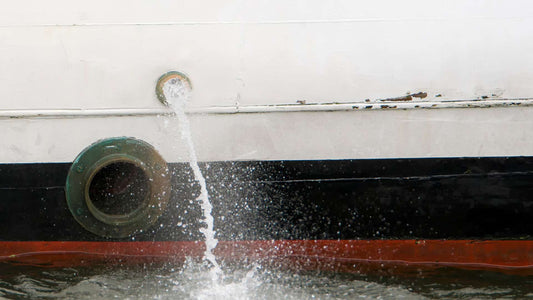
Understanding Bilge Pumps: A Comprehensive Guide for Boaters
Share
Maintaining a dry bilge is crucial for both the safety and performance of any vessel. Water accumulation can lead to stability issues, equipment damage, and, in severe cases, sinking. A bilge pump serves as an essential tool in managing this water, ensuring that any ingress is promptly and efficiently removed. Understanding the function, types, and maintenance of bilge pumps is vital for all boaters.
What is a Bilge Pump?
Definition and Purpose
A bilge pump is a device designed to remove water that accumulates in the bilge-the lowest compartment inside the hull of a boat where water collects. This water can come from various sources, including rain, waves, leaks, or even routine activities like cleaning. The primary purpose of a bilge pump is to expel this unwanted water overboard, maintaining the vessel's buoyancy and preventing potential hazards associated with excessive water accumulation.
Importance of Bilge Pumps
While bilge pumps are not designed to handle catastrophic flooding, they play a critical role in managing everyday water ingress. By keeping the bilge dry, these pumps help prevent corrosion, electrical issues, and mold growth, all of which can compromise the vessel's structural integrity and the health of those on board. Moreover, in emergency situations, a functioning bilge pump can buy valuable time to address leaks or await rescue, thereby enhancing overall safety.
Types of Bilge Pumps
Manual Bilge Pumps
- Hand-operated and do not rely on electricity.
- Ideal for small boats or as a backup system.
- Reliable but require physical effort to operate.
Electric Bilge Pumps
- Powered by the boat's electrical system.
- Often equipped with automatic float switches for self-activation.
- Suitable for handling larger volumes of water.
Diaphragm Bilge Pumps
- Use a diaphragm mechanism to create suction and expel water.
- Can handle small debris in bilge water.
- Generally lower flow rates compared to centrifugal pumps.
Centrifugal Bilge Pumps
- Use a rotating impeller to move water.
- High capacity but must be submerged to function properly.
- Less effective at handling debris.
How Bilge Pumps Work
Activation Mechanisms
- Manual Activation: Requires switching on manually, providing control over when the pump operates.
- Automatic Activation: Uses float switches or electronic sensors to detect water levels and engage the pump automatically.
Operation Process
- Once activated, the pump draws water from the bilge and expels it overboard through a discharge hose.
- Performance depends on factors such as capacity, head height, and discharge hose condition.
Selecting the Right Bilge Pump for Your Boat
Capacity Considerations
- Bilge pumps are rated in gallons per hour (GPH).
- Choosing the right GPH rating depends on boat size and expected water ingress.
Placement and Number of Pumps
- Install pumps at the lowest point of the bilge.
- Consider multiple pumps for redundancy in different compartments.
Power Source and Compatibility
- Most electric pumps run on 12V DC power.
- Ensure compatibility with your boat's electrical system.
Installation and Maintenance Tips
Proper Installation
- Securely mount the pump and route discharge hoses correctly.
- Prevent backflow by installing check valves if needed.
Regular Maintenance
- Routinely inspect and clean the bilge pump to prevent clogging and inefficiency.
- Check the wiring and ensure no corrosion has occurred in electrical connections.
- Clear out debris that might obstruct the pump intake.
Testing Functionality
- Regularly test both manual and automatic activation systems.
- Simulate high water levels to ensure the automatic switch engages properly.
- Replace worn-out parts immediately to avoid failures during operation.
Legal and Environmental Considerations
Regulations
- Some regions require bilge pumps on boats of specific sizes or categories.
- Compliance with Coast Guard or local marine regulations ensures safety and legality.
- Ensure installation and operation align with maritime safety standards.
Environmental Impact
- Prevent oil and fuel contamination in bilge water, which can harm marine life.
- Use oil-absorbing pads or bilge filters to prevent pollutants from being discharged overboard.
- Dispose of bilge water responsibly in marinas equipped with waste management facilities.
Choosing and Maintaining Your Boat's Bilge Pump
Bilge pumps play a vital role in maintaining boat safety and seaworthiness. By choosing the right bilge pump, installing it properly, and keeping up with regular maintenance, boaters can ensure a dry and secure vessel. Staying compliant with legal regulations and mindful of environmental impact further enhances responsible boating. Investing in a reliable bilge pump system is a key step toward a safer and more enjoyable time on the water.
When it comes to keeping your boat clean, look to Captains Preferred Products' boat cleaning supplies. Find everything you need to keep your vessel squeaky clean all season—always at the best prices.



